Josh Kilmer-Purcell's Blog, page 12
March 1, 2018
Winter Break(age)
A lot of people go on vacation for Winter Break. But when the snow melts, we go for a walk around the farm to catalog our own Winter Breakage. Winters are particularly brutal at Beekman. They cause a lot of damage. But since most of it is covered up by snow we don’t discover it until first melt.
We know that many people have a vision of Beekman 1802 Farm as an amazing place where everything is polished and perfect. It’s not. By any stretch. Especially after winter. So we thought we’d take you on a walk with us and show you exactly how imperfect things can get around here. It can get downright ugly.
But you know what? We’re happy that Beekman 1802 Farm isn’t flawless. Nothing that’s 216-years-old could ever be “perfect.”
Sure, it would be simpler to live in a new high-rise building, with nothing to repair, ever. (And believe us…we’ve fantasized about that plenty of times.) But then we’d have nothing to do, and nothing to complain about – which are two very important things to have in life. One keeps you busy, and the other keeps you grounded.
Which is a good way to pass the next 216 years.





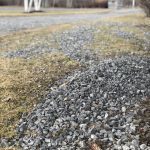





The post Winter Break(age) appeared first on Beekman 1802 Mercantile.
February 28, 2018
First Things First: Advice from Diane and Granny for the “First Time Gardener”
New gardeners learn by trowel and error, and that is no joke! Gardening for the first time can be the most rewarding (and the most frustrating) thing to start doing. For those fortunate few who learned how to garden from the time they were children, gardening comes second-nature. For the rest of us who want to learn how to garden as an adult, frustration can easily discourage our efforts. Granny and I are writing this post specifically for those of you who are new to gardening and need the bare basic advice on how to begin your first garden.
So, first things first, you need to buy your seeds. A lot of the more experienced gardeners in warm and moderate zones have already started some of their seeds indoors in peat pots, and probably sowed their root vegetables (turnips, radishes and carrots) back in early February. Don’t get discouraged, it is still mid-March and it is not too late to get started!
Second, decide where to put your garden. It should be in the spot that gets the most sun throughout the day, and has good drainage (meaning water doesn’t stay puddled, it naturally drains out). My advice on how to do this: wake up at sunrise, make a pot of coffee, then enjoy the day sitting on your back porch and watch your yard as the sun passes. Take notes on how long each section of your yard gets sun. This is only necessary if your property has a lot of trees because the shade from trees changes throughout the day, and it can seriously affect the decision of where to locate your garden (my backyard has ten trees, so I had to pick my garden spot carefully!) Most likely, your garden will not do well in the shade because all of the vegetables in the heirloom garden seed kit require full sun; generally that means at least six hours per day of direct sunlight.
Third, consider how you want to grow the vegetables, there are basically three ways. You can grow directly from the ground, in raised beds, or in containers on a patio (for those who live in apartments or condos). Which ever way you choose, directions for how to start the seeds is on the website printed on the back of the seed packets. Take the time to read the instructions on this website; it will make all the difference in the world if your seeds are planted properly. Also, if you have never used raised beds before, there are numerous websites available that give instructions on how to build them, or how to buy them. If you decide to grow directly from the ground, you may want to have your soil tested for pH and nitrogen levels. I know that sounds crazy, but it could make a big difference in the performance of your garden. There are many places to send a sample, universities that have large agricultural departments will usually do this for a minimal charge; it just takes a little internet research to find one. The results of your sample will give you instructions on how best to prepare the soil. If you don’t want to send off a soil sample, it is always good gardening to add a layer of compost to your soil (you can buy compost at your local nursery, but you should consider starting your own compost pile, if you would like instructions on how to do that, just let me know!) Then, of course, if you decide to grow from the ground, it has to be tilled. You can rent tillers from local hardware stores, and they are fairly easy to manage. If you know how to use a push mower, you can use a tiller!
Fourth, make sure you have access to water! If you are a first time gardener, chances are you don’t have a drip irrigation system set up like most of the experts have. That is no problem! Just make sure you have easy access to a water spigot, a water hose, and a good spray nozzle. It is also a good idea, if you can, to start a rain water collection. You can spend the money on an advanced collection system, or you can do what I do and thow a dozen buckets out back when it starts raining! From Granny’s experience, plants do better with rain water than they do with water from the faucet. The most important advice on watering that I can give a first time gardener is to pay attention to the leaves of your vegetables. If they are rotting, then they are getting too much water. If they are wilting, they are not getting enough. It is best to water first thing in the morning, if you water at night it may encourage mold to grow. Last, water the ground, not the leaves of the plants. Too much water on the leaves can potentially sunburn them, and that is never good!
Last, have fun with your new hobby. Having a garden is so much like having a child. It needs to be nurtured, and can sometimes take up a lot of your time. But, I have learned that taking the time to do something for myself is the primary reward that I get from gardening. Again, this post is merely intended to give enough information to get you started on a garden. I think it is important to start small and simple, as you learn it will get much easier, and you will be able to try more complex gardening methods. And, don’t forget that it is inevitable that the beginner gardener will end up with a few plant “casualties” along the way. The point is to not let that discourage you, it happens to everyone; even Granny lost a couple of tomato plants last year!
The post First Things First: Advice from Diane and Granny for the “First Time Gardener” appeared first on Beekman 1802 Mercantile.
February 23, 2018
Why We Provide Bottle Service On Our Farm
Whether they sproing around on four hooves, or learn to walk upright on two feet, we can all agree that kids are a lot of work. Farmer John makes it look easy, but the TLC he gives his herd of goats is unmatched. Sometimes, love means going the extra mile, so at Beekman Farm we choose to bottle feed our baby goats instead of letting the dams (mothers) feed their own kids. Sure, this requires a lot more work (round the clock baby goat bottle feedings, anyone?) but we believe bottle feeding is what’s best for the kids, the dams, and the health of Beekman farm. Why? Well, we’ve goat our reasons…

1. Caprine Arthritis Encephalitis
The health of our kids and dams is our first and foremost priority. Caprine Arthritis Encephalitis is a viral disease of goats that can often go undetected before it’s too late. CAE leads to arthritis, pneumonia, weight loss, and encephalitis (inflammation of the brain tissues.) CAE is passed on to the kids through the infected mother’s milk. While we’re proud to say our herd has tested CAE free for years, we continue to pasteurize the milk fed to the kids and bottle-raise each new herd every year.
2. Wean on Me
As if the arrival of dozens upon dozens of new baby goats under one barn roof isn’t stressful enough, fast forward to when it’s time to wean. Yikes. Weaning can be an incredibly stressful time for both mom and kid. But, by bottle feeding the kids from birth, Farmer John has all the control and can begin the weaning process when the time’s right by reducing the number of milk bottles fed to the kids. Sure, they might be hangry when they don’t get their bottle, but they’ll be far less confused and stressed because they’ll still be in the familiar company of the herd.
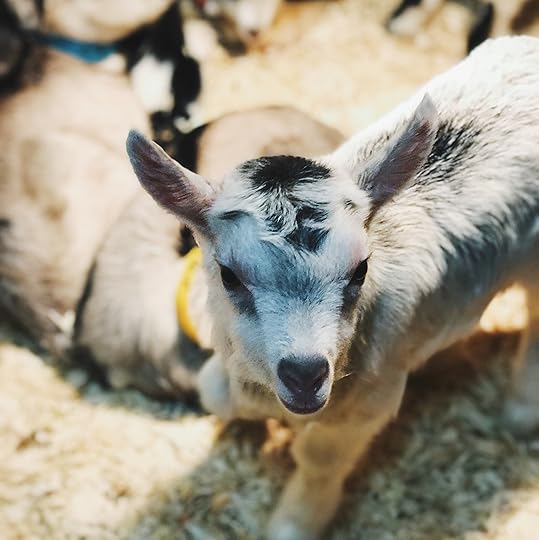
3. Stress Free Zone
Goats are instinctively skittish and wary of humans. Anyone who’s been around wild goats know that it’s impossible to pet them. And since our goats eventually will be milked twice a day, it would be inhumane not to have them be comfortable around humans. Because Farmer John bottle feeds them from birth, our kids imprint on him and think of him as their caregiver. Thus when they’re fully grown, and ready to be milked, they actually look forward to the time they get to spend with Farmer John during milking time. Thanks for getting them used to the human race, Farmer John!
4. Udderly Smooth
Any mother who’s breast fed their child knows what havoc those little teeth and constant nibbles can wreak. It’s important for our dams to have healthy udders, because healthy udders mean healthy milk. (Plus, the milking machine is just waaaaayyyy more comfortable than teeth.)

5. The Friendliest Kids
Many of you have toured the farm and witnessed first-hand the antics of our goats. Most of you have probably even gone away with goat nose prints on your cameras. Bottle-fed goats are more outgoing and less fearful because they’re used to seeking their needs from humans from day one. In fact, they kinda have us wrapped around their little fingers. (We mean hooves.)
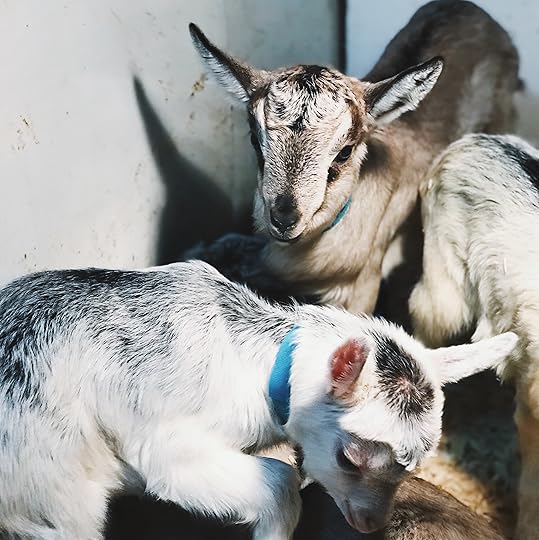
6. Health is the Greatest Wealth
We started this list with our herd’s health, and we’ll end it with our herd’s health….because that really is our #1 priority. By bottle feeding, we’re able to keep a much closer eye on our kids during the crucial first few weeks of life, allowing us to monitor sickness, activity, mood, and other physical or behavioral concerns. Furthermore, not all dams produce enough milk to feed all their kids, which can sadly lead to starvation. In fact some dams refuse to allow their kids to feed, for reasons no one fully understands. But by sharing the milk wealth across all the kids, no kid ever walks away hungry at Beekman 1802 Farm.

1
Over the Wall Tote Bag

2
"Hi Kid, Bye Kid" Onesie

3
"Hi Kid, Bye Kid" Child Shirt

4
Gentlemen Goat Farmer Shirt
Visit the Mercantile
The post Why We Provide Bottle Service On Our Farm appeared first on Beekman 1802 Mercantile.
Of all the roads you take in life, make sure a few of them are in Sharon Springs
Most of you have heard our story before. You know we stumbled into Sharon Springs while on a weekend getaway from NYC. It changed our lives. And if you’re thinking that it might be able to do the same for you, we wanted to share a few highlights of our village.
Sharon Springs sits in the Northwest corner of Schoharie County – 600 square miles of rolling hills and meandering streams. It’s probably one of the most overlooked counties in the state. We’re kinda glad for that. But we kinda like to show it off too. So here’s a list of some of the best sights and sounds Sharon Springs and Schoharie County have to offer.
The first stop is the village time nearly forgot: Sharon Springs, a spa town that once drew 10,000 people a year to its mineral springs in the 1800s, is back on the map after falling into disrepair.
SHARON SPRINGS

1. Brunch at the American Hotel
If you enjoy a Sunday drive with a delicious destination, then be sure to book a brunch reservation at the American Hotel. Our go-to spot for a date night in town (yes, we have a favorite table, too), the 3 ½ story Greek Revival, front porch lined with rocking chairs begging you to take a seat, proudly stands in its restored glory on Main Street in the heart of downtown Sharon Springs. The hotel, whose original floorboards were first laid in 1842, is not only the magical result of a five year historic preservation project, thanks to vigilent proprietors and Beekman Neighbors Doug and Garth, but also listed on the National Register of Historic Landmarks and home to the coziest restaurant with the tastiest menu.
They focus on two things at the American Hotel: hospitality, and a fabulous place to enjoy a locally grown meal. The award-winning restaurant offers a variety of delicious menus to complement your round-the-clock cravings, and you should most definitely schedule a dinner on your culinary calendar, but if you really want to get your leek on fleek, their brunch menu is egg-cellent and totally worth the drive.

2. Curried Chicken Salad at the Black Cat Cafe
If the American Hotel is the granddaddy of menu offerings in town, then the little cafe across the street is the cat’s meow. The Black Cat Cafe offers up a scrumptious breakfast and lunch menu seven days a week. It’s the perfect pitstop for a quick bite; their homemade soups and sandwiches really hit the spot, but you’ll want to stay much longer so be sure to save room for a delicious treat and afternoon tea. It’s charming interior’s perimeter is lined with vintage, enamel top tables, an assortment of mixed-matched chairs, a drool-worthy bakery case, and the world’s best curried chicken salad. You think we’re joking, but this flavorful concoction of chicken, walnuts, scallions, raisins, mayo, celery, chutney on homemade raisin bread is an explosion of tastes and textures simply unmatched on menus throughout the area. Often imitated, but never duplicated, one taste, and the cat will surely have your tongue.
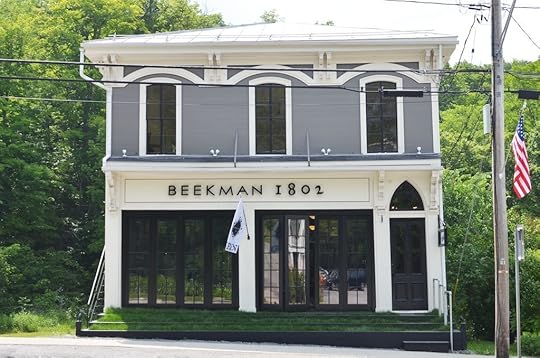
3. Visit to the Beekman 1802 Mercantile
A trip to Sharon Springs isn’t complete without a stop at the Beekman 1802 Mercantile. Home to all things Beekman, immerse yourself into sensory overload: the sights, sounds, scents, and flavors straight from the farm and our devoted artisan partners. We’re so proud that the Mercantile is a place where the farm extends beyond its fences and comes to life in the heart of downtown Sharon Springs, greeting our neighbors from near and far. Exploring downtown Sharon Springs by foot will put a pep in your step and you can see for yourself why we fell in love with this tiny village and milked our visit.

4. Visit to Beekman 1802 Farm
Why end your Beekman experience at the Mercantile? Unfortunately, we can’t open up the farm to visitors as often as we’d like, but Beekman 1802 Farm is open for tours during village festivals and a handful of super select dates throughout the year when being on the Farm has its perks. (Think: baby goats!) If you make it to the Farm, and we really hope you do, you’ll come face to face with the familiar cast of characters and countryside landscapes you’ve come to know over the years. Feeling chatty? Have a heart-to-heart with Farmer John. Got baby fever? Practice your baby talk on the baby goats to your heart’s content. Tease your green thumb by strolling through the towering flower beds and hearty heirloom vegetable gardens (150 varieties of vegetables in 53 raised beds, but who’s counting?). With a little exploring you’ll find the perfect midday pit stop and cool down in the Beekman Family Crypt. (Don’t be scared – there’s no cryptkeeper, and it’s more cool than it is creepy).
While it’s never a bad day to visit Beekman 1802 Farm, here’s an insider tip for weary travelers: the Beekman Summer Tours are the only tours where we are physically at the farm to greet our Neighbors! Usually when the farm’s open we’re holding down the fort at the Mercantile on Main Street meeting folks, signing books, and taking photos, so if you want to see us in action on the farm, consider planning a jaunt to Sharon Springs in July or August. In addition to the announced Beekman 1802 Farm Tours on the website, keep your eyes peeled for some fun, new farm adventures popping up on the calendar this year!
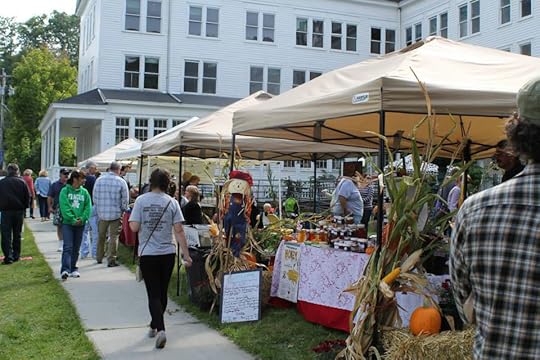
5. Celebrate at the Garden Party & Harvest Festival
Speaking of village festivals, while there’s always a little sparkle on the streets of Sharon Springs, they really come to life during two very crucial weekends of the year: once in the Spring during our annual Garden Party, when April showers have given way to May flowers, and Beekman Farm is in full bloom. If May flowers aren’t your thing, then the Harvest Festival may be right up your alley, when the bounty is ripe and the foliage is on fire. No matter the season, the Sharon Springs street festivals will surely complement your calendar cravings. And since it’s always a good time to shop for someone special, with a myriad of vendors as far as the eye can see posting up all over town, our Beekman-backed Main Street festivals are the perfect one-stop-spot to find some handmade goodies to gift to your Neighbors.
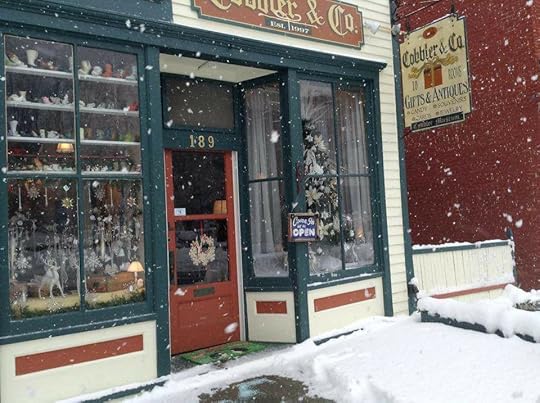
6. Shopping at Cobbler & Co.
No matter what your shopping passion, chances are you’ll find it in Schoharie County. Right in downtown historic Sharon Springs, Cobbler & Co. is an eclectic gift shop featuring twelve themed rooms filled with unique, whimsical, and hard to find items perfect for any occasion. Every nook and cranny holds a surprise, so be sure to keep your eyes wide open as you navigate from room to room. Even if you don’t have any shopping to do, it’s absolutely worth a peek inside this little house with rooms filled with goodies!
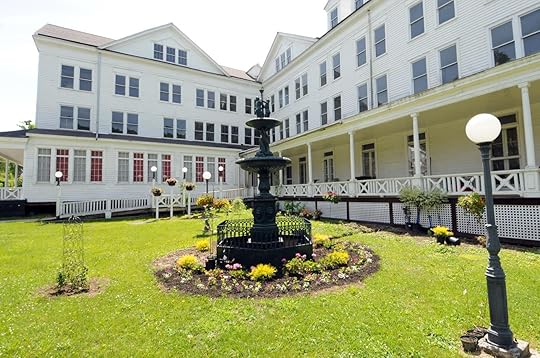
7. Tea at the Roseboro Hotel
Once an elegant Victorian-era resort like many others that once proudly lined Main Street in downtown Sharon Springs, beckoning vacationers from New York City to this tidy village off U.S. Route 20, the Roseboro Hotel is finally experiencing its own revival. Although its well-preserved first floor used to be home to the Beekman 1802 Mercantile before we moved up the street, the rest of the enormous hotel had fallen into rack and ruin years before. That is until, Ron, an investor from Silicon Valley, packed his bags and moved to Sharon Springs with ambitious plans to restore the Roseboro and once again make it a vital part of the fabric of the village on the western edge of Schoharie County.
The Roseboro was once famous for its high teas and tea dances, and the first establishment to take residence is Miss Lodema’s Tea Room, brewing up an experience to literally give guests a taste of what life was like during the hotel’s heyday. Another unique element to Miss Lodema’s Tea Room is that the guests will likely be seated at tables with people they don’t know as an effort to encourage friendship because according to the proprietor, that’s what Sharon Springs is all about!
The post Of all the roads you take in life, make sure a few of them are in Sharon Springs appeared first on Beekman 1802 Mercantile.
February 22, 2018
Relax! Tips for Using Lavender in Your Kitchen, Garden & Beauty Routine
Aaah, lavender. Just thinking about it relaxes us. We grow several different varieties on the farm, and after many years of testing different locations, we’ve found perfect spots for them to thrive and survive our coldest winters. Nearly forty plants within the mint family are technically classified as lavender, and the colors range from the common purple, to white, to pink, to blue…there’s even a yellow violet.
We’ve all heard that lavender make us relax, but it also has a whole host of other benefits, from skincare to culinary.

Stress? What Stress?
Perhaps the easiest and most powerful way to use lavender is to rub a few drops of lavender essential oils onto your temples and other pulse points. The aroma alone can sooth the mind and body by relieving anxious thoughts and balancing your mood. It’s even been shown to help alleviate headaches.
Soothe Irritation
If you have sensitive skin that seems to erupt in rashes every other day, mixing a few drops of lavender essential oil in with your regular moisturizer can help calm it. (However, people with sensitive skin also have many allergic reactions, so be sure to test a little bit on a patch of skin before slathering it all over.)
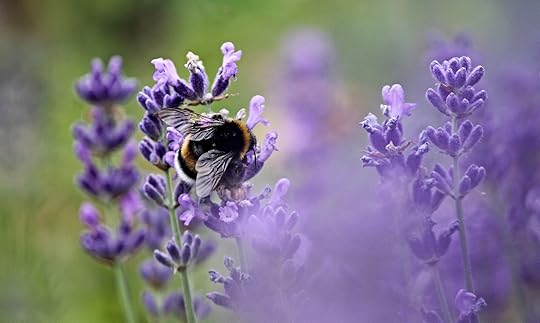
Wash Your Worries Away
We add a few drops of lavender oil to our washing machine and dryer balls when washing our sheets and pillow cases. It helps us drift off to sleep with less cares…and no need to count baby goats.
Zap Zits
Forty-some years old and we’re STILL waiting for our skin to clear up permanently. Lavender is an antiseptic and an anti-inflammatory, which means that it helps to kill bacteria that causes acne, and heals the skin so breakouts don’t leave behind any scars. Simply dab a few drops of lavender essential oil onto those pesky bumps, and watch the magic happen. If full-strength oil is too strong, (remember, skin test!), dilute a few drops with witch hazel on a cotton ball or cleansing cloth and gently apply to the little buggers.
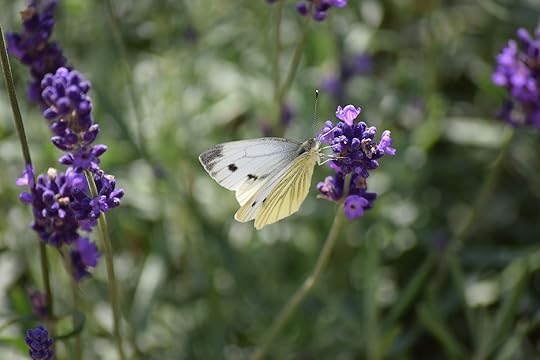
Buzz Off
Suffering from a bug bite? A bit of lavender oil can help reduce the swelling and minimize itching. Because of its anti-inflammatory and antiseptic properties, it also helps to soothe wounds and reduce the development of scar tissue.
L’Ingrédient Secret
Josh learned a lot of his cooking skills from his french uncles. Arthur & Bob lived in Provence, which is probably the region most famous for incorporating lavender into its cuisine. Whenever you’re using typical french herb blends – savory, marjoram, rosemary, thyme and oregano – in your cooking, try adding a little ground lavender. A little goes a long way though. Add too much and your dish will taste like a lingerie sachet. (A bit of lavender is also great in dessert recipes…pound cakes, custards & fruit fillings.
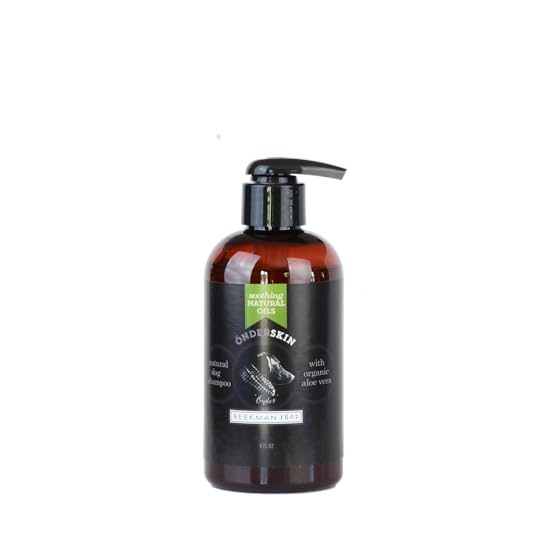
1
ÖnderSkin Goat Milk Dog Shampoo

2
Fig Leaf Goat Milk Bar Soap
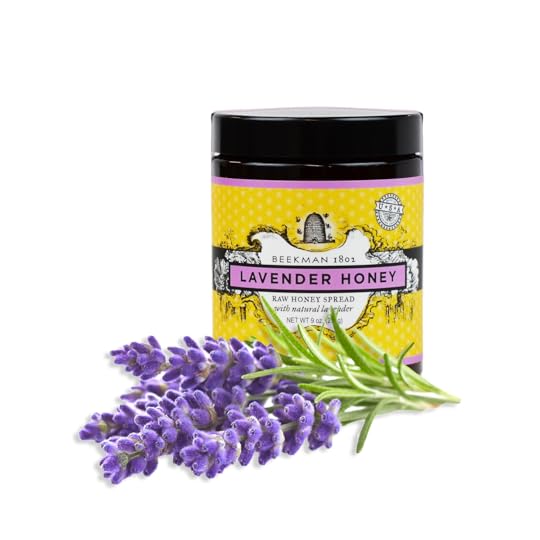
3
Lavender Creamed Honey
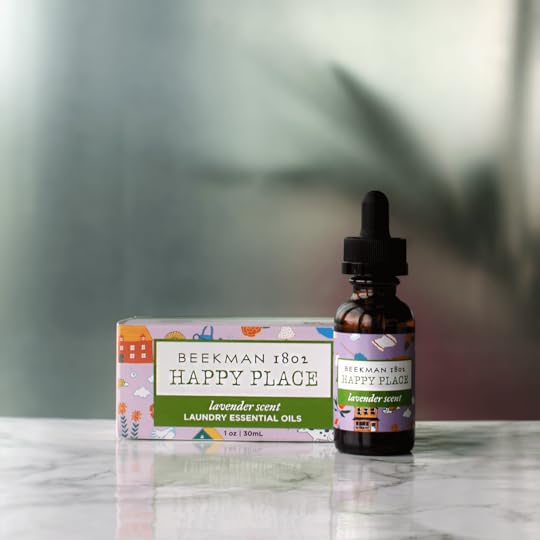
4
Happy Place Lavender Essential Oil
Visit the Mercantile
The post Relax! Tips for Using Lavender in Your Kitchen, Garden & Beauty Routine appeared first on Beekman 1802 Mercantile.
PART 2 | Making Their Mark: Incredible Contributions to Agriculture Made by African-American Farmers
Our second post in a series highlighting a handful of the African-American farmers, horticulturists, and inventors who have made major agricultural contributions to have revolutionized the way our food system functions today. (See Part 1 here.)
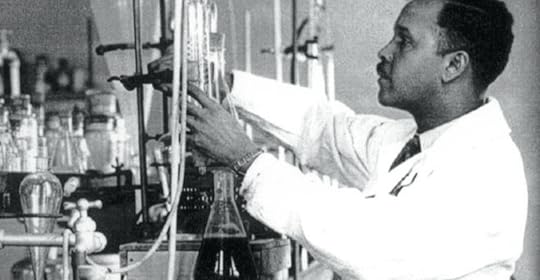
Percy Lavon Julian
If you’ve taken any prescription pill in your lifetime, you’ve probably got Percy Lavon Julian to thank. Before Julian, most of life’s ailments were treated with homeopathy passed down through generations. People didn’t know why certain plants were healing, and more importantly, they didn’t know how to extract the medicinal properties from them. Born in Montgomery, Alabama in 1899, Percy Lavon Julian, the grandson of a former slave, overcame a lifetime of discrimination by becoming an internationally acclaimed inventor of synthetic medicines. Julian was a pioneer in the chemical synthesis of medicinal drugs from plants. His research helped uncovered new uses for the chemicals found in soybeans, which let to inventions outside the realm of medicine. For example, a protein he extracted from soybeans was used to produce a fire-retardant foam in fire extinguishers, which saved thousands of soldiers’ lives during World War II.

Frederick McKinley Jones
How did a man who wasn’t a farmer create the invention resulting in the biggest change to modern day agriculture? By figuring out how to better get the supply to the demand! From an early age, Frederick McKinley Jones took a strong interest in mechanics and electricity, and in 1940 he patented his technology for refrigeration systems. But not content to merely invent modern refrigeration, he harnessed his entrepreneurial streak became the co-owner of the company Thermo King, which installed his systems on transportation vehicles. Jones’ refrigerated trucks, boats, planes & boxcars allowed perishable foods to be shipped further distances allowing fresh seasonal produce to last longer and be marketable throughout the entire year.
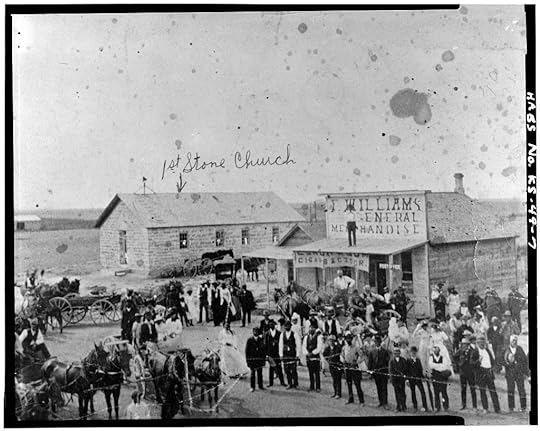
The Farmers of Nicodemus
In 1877 a group of newly freed slaves from Kentucky took advantage of the Homestead Act of 1862 and moved west to Kansas with the goal of establishing the first all black settlement in the western plains. Struggling through harsh winters and punishing summers, the newly founded town of “Nicodemus” became a beacon for other freed slaves who wanted to put their hard-earned agricultural knowledge to work for themselves. The town quickly became a symbol of self-sufficiency and potential prosperity. It swelled to a population of 650 African Americans who owned and farmed over 3000 acres of profitable crops at a time when most freed slaves in America still had to become sharecroppers to survive. However after several years of drought and poor harvests, and losing a bid for a railroad stop, many of the settlers moved on. A few descendants of these farmers are still holding on to their legacy in Nicodemus, which will be forever remembered for at one time being “The Largest Colored Colony in America.”
Recognizing these agricultural stories in the black community isn’t just about honoring black history, it’s about recognizing the diverse roots and voices of today’s food movement, and realizing that the teachers we seek in this movement are right within our own communities.
The post PART 2 | Making Their Mark: Incredible Contributions to Agriculture Made by African-American Farmers appeared first on Beekman 1802 Mercantile.
PART 1 | Making Their Mark: Incredible Contributions to Agriculture Made by African-American Farmers
It’s an uncomfortable truth that William Beekman – like most large farmers of his day – kept slaves here on our farm. Even in the North, slavery was the most common form of agricultural labor that fueled our region’s growth. It wasn’t until 1827 that slavery was officially abolished in New York State.
We never shy away from sharing Beekman 1802 Farm’s slavery history when we give tours of our historic property. In fact, we realize that these enslaved men and women had perhaps the largest role in building, maintaining and growing the house and land that we cherish so much today. Local lore has it that Beekman Mansion also eventually served as a stop on the Underground Railroad, thus bringing its slave history full circle.
In celebration of Black History month, we not only want to honor and celebrate the African Americans who built our farm, we also wanted to highlight some of the major (often overlooked) contributions African-Americans have made towards farming, horticulture, and food science. Their work was revolutionary and inspires us to think sustainably and press on – no matter the obstacles along the way.
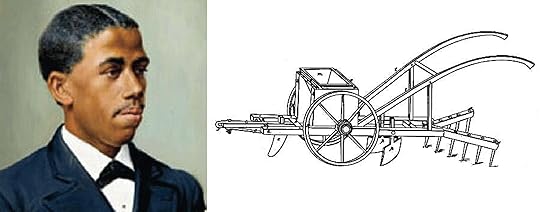
Henry Blair
Have you ever driven across the midwest and seen those hulking, two-story tall tractors pulling a giant rake-looking implement behind them? Those million-dollar pieces of technologically-advanced equipment can trace their roots directly back to Henry Blair. Born in 1807, Henry Blair was a farmer and the second African-American to be granted a patent. Despite being illiterate and formally uneducated, he developed and patented two major agricultural inventions. His corn planter had a compartment which held and dropped the seeds to the ground, and rakes which followed to cover them with soil. Blair’s horse-drawn cotton planter had two shovel-like attachments that divided the soil, and a cylinder shaped wheel that dropped the seeds into the newly turned soil. The principles behind his patents are still being used by the likes of John Deere & Kubota today.
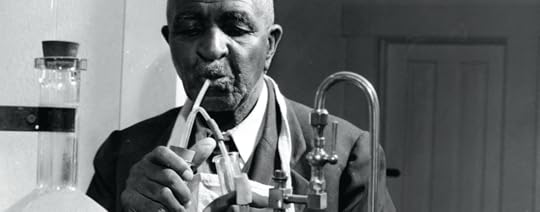
George Washington Carver
What you learned in 6th grade was wrong! Contrary to popular belief, George Washington Carver did not invent peanut butter. He did, however promote more than 300 uses for peanuts in a research bulletin titled, “How to Grow the Peanut and 105 Ways of Preparing it for Human Consumption,” in 1916. The document includes interesting ways to use peanuts, products like shampoo, mayonnaise, and paints. (Hmmm…”Beekman 1802 Peanut & Goat Milk Shampoo?”)
A botanist, inventor, and educator at Tuskegee University, Carver was one of the first to recognize the problems of mono-cropping. He taught farmers to revitalize their southern soil that had been stripped by cotton, a nitrogen-depleting crop. He developed a crop rotation method that alternated the cotton with legumes like peanuts that correct nitrogen and other edible crops such as corn. His method not only increased the soil’s productive capacity, it also gave southern farmers a second crop to produce and sell besides cotton, thus diversifying the market.
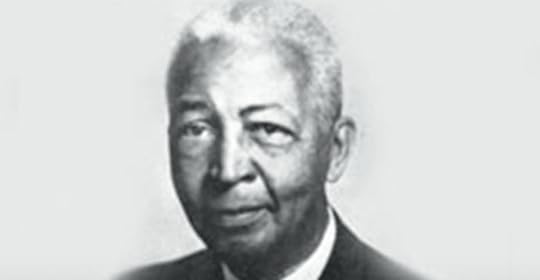
Lloyd Augustus Hall
Every time you make a BLT, you have Lloyd Augustus Hall to thank. As a chemist, Hall made major contributions to food preservation science. In fact, prior to Hall’s inventions, the chemical preservation of foods could scarcely be called science. Most preservation was done in the home with common salts, and it was difficult to keep foods from spoiling without making them taste bitter. Hall discovered a way to use a combination of sodium chloride with tiny crystals of sodium nitrate and nitrite, which suppressed the nitrogen that spoiled the food. His patented method of curing meats is still used today.
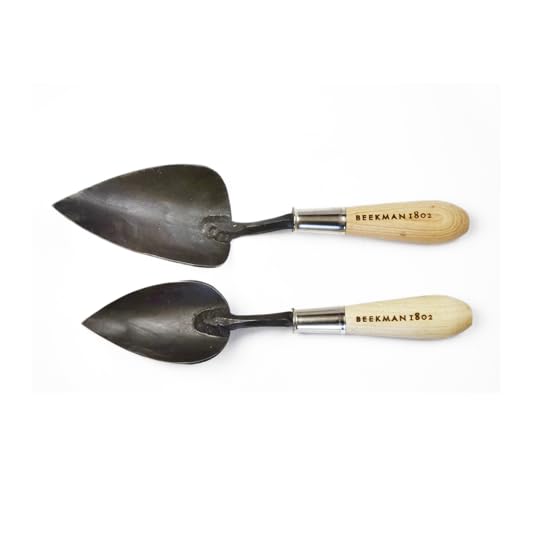
1
Eternity Hand-Forged Trowels

2
Garden Hod & Dibble Set

3
Eternity Hand-Forged Crow's Foot Cultivator

4
Eternity Hand-Forged Dutch Weeder
Visit the Mercantile
The post PART 1 | Making Their Mark: Incredible Contributions to Agriculture Made by African-American Farmers appeared first on Beekman 1802 Mercantile.
February 19, 2018
“Pinkster”: The Oldest African-American Holiday Was Born Here
When you think of African-American heritage, upstate New York is not the first place that comes to mind. While many larger farms in our region had slaves (including William Beekman’s,) they numbered far fewer than in the South or in early American urban centers.

So how did our region become home to the very first truly African-American holiday?
Ironically, it’s because we had so few African-Americans.
While slavery in the northern states may not have been as brutal as it was in the south, the life of a norther slave was still oppressive and bleak. Because of the harsher climate and fewer number of slaves per household, most slaves lived right in the homes of their owners, typically in attics or basements. Some local lore claims that a set of chains in the Beekman basement was used to chain slaves. However other stories speak of William Beekman’s benevolence towards his slaves.
Because northern slaves were fewer and farther apart they rarely encountered other Africans, and so didn’t have a chance form their own cultural identity as they did in the South. With one notable exception: the weeklong holiday they named “Pinkster.”
Pinkster derives its name from Pinksteren – the Dutch word for Pentecost. Pentecost is a Christian holiday that falls seven weeks after Easter. Dutch families, like William Beekman’s, celebrated Pinksteren with typical springtime festivities.

But more interestingly, Dutch slave owners around upstate New York temporarily “freed” their slaves during Pinkster, allowing them to travel to central locations and gather with other African Americans. One of the biggest Pinkster gathering places was Albany, NY. Arriving in small groups over several days, the “freed” slaves built African-styled structures in the parks, and formed their own temporary society. They brought handmade goods to barter and sell, danced to African drumming, and capped the week off with a large parade. It was truly a spectacle, with reports of white citizens gathering to watch and sometimes take part in the colorful and noisy festivities. The gathering was especially important to those slaves born in Africa as a chance to preserve and impart their African heritage to newer slaves born in North America.
The highlight of the Pinkster festival was the crowning of the Pinkster King, who ruled over the week’s festivities. It was a rare chance to honor respected members of the black community. Like Boxing Day in England, the festival represented an almost satirical inversion of the social order. African Americans elected their own royalty, and mimicked (and mocked) the customs and fashions of their white owners.
One King in particular was very renowned, and was re-elected every year between 1790-1810 – the height of Pinkster celebration’s popularity. His name, according to a lengthy poem called “The Pinkster Ode,” was Charles. He allegedly descended from Congolese royalty, and was a master drummer.

Pinkster celebrations had mostly disappeared by 1850, a result of the gradual abolition of slavery in New York State and the ascendance of English immigrants, who viewed the Dutch and their traditions as boorish and backwards.
We don’t know much about Beekman 1802 Farm’s slave history. We hope that William Beekman allowed his slaves to travel to Albany for Pinkster since the farm was built during the height of its popularity. But regardless of our farm’s history, we’re proud that our central New York region can lay claim to America’s first truly African-American holiday.
The post “Pinkster”: The Oldest African-American Holiday Was Born Here appeared first on Beekman 1802 Mercantile.
Feather Easter Eggs
Living on the farm, we come across an array of feathers on the ground from flocks of birds flying overhead. We were inspired to create this project to bring nature into our home with this simple project.
Materials
Mod Podge
Assortment of feathers
Eggs
Brush

Using the feathers, position them onto the eggs where you would like to glue them.

Using your brush, take some glue and carefully brush it over the feather to attach it to the egg. Be mindful of the direction of the feathers when brushing the glue on.
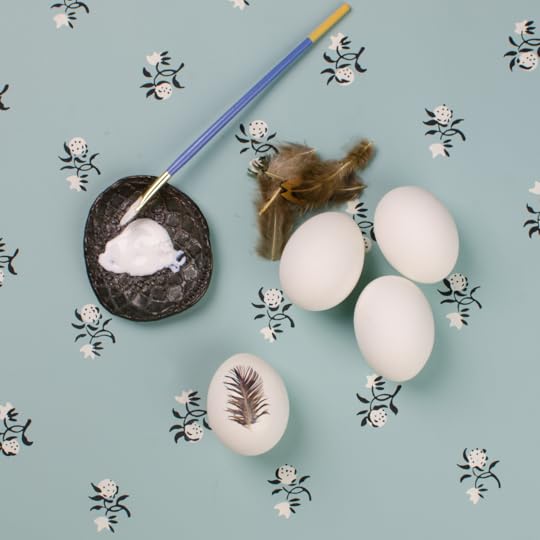
After it dries, apply a second coat of glue over the top.

TIP: When picking out feathers to use, choose smaller eggs, and above all make sure the quill is thin and small so that it lays flat against the egg.
After you work on yours, post your photos on our Facebook page.

1
Bohemia
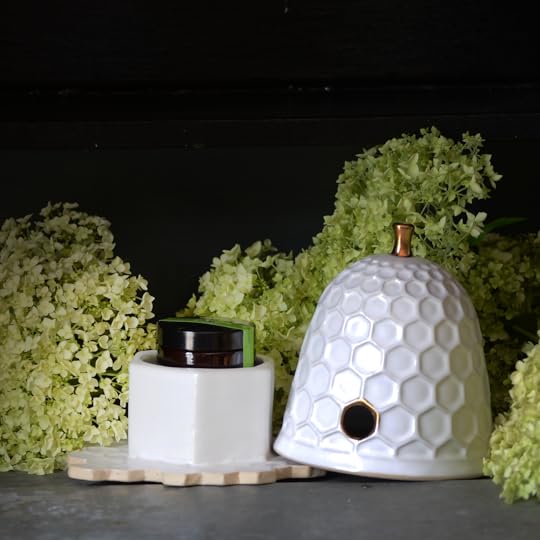
2
Ceramic Honey Pot

3
D.I.Y. Apothecary Kit

4
Keys to the Beekman
Visit the Mercantile
The post Feather Easter Eggs appeared first on Beekman 1802 Mercantile.
February 8, 2018
B.1802 Reading List | February 2018
Because we feature so many great titles in our Beekman 1802 Almanac Magazine, our library grows daily with advance copies of books that are coming out in the next 6 months. With January and February being the last big reading months on the farm, we’re taking advantage of it and catching up on our reading and planning for the season ahead.

We are in full prep mode for the arrival of Spring and anyone that knows us, know that we grow our own food on the farm. Growing your own food is exciting, but figuring out how to make the most of your produce can be daunting. In GROW COOK NOURISH, Darina takes you through an extensive list of vegetables, herbs, and fruits with each entry including explanations of different varieties, practical information on cultivation, growing, and maintenance, and instructions for the best ways to cook the produce as well as preserve it.
Buy it on Amazon >> Grow Cook Nourish: A Kitchen Garden Companion in 500 Recipes[image error]
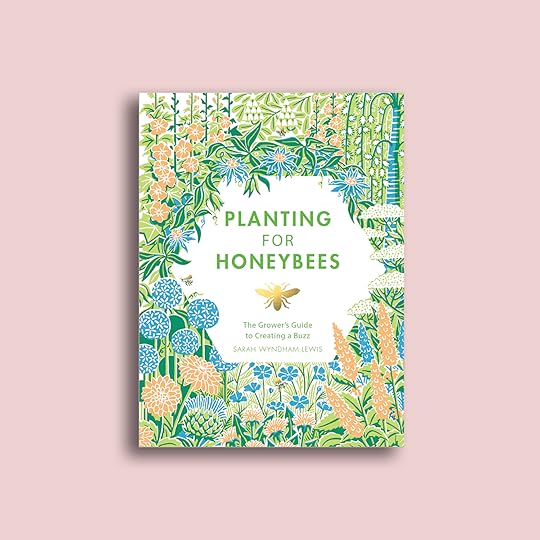
Of the 25,000 known species of bee worldwide, only seven species are honeybees. PLANTING FOR HONEYBEES shows you how you can help these delightful pollinators to flourish by creating a garden as habitat for them. No matter how small or large your space – from a window ledge in the city to a country garden – Sarah Wyndham Lewis offers practical advice on which plants to grow and when and where to plant them. Charmingly illustrated with delicate drawings, this a jewel of a guide that we’ll keep referring back to time after time on the farm.
Buy it on Amazon >> Planting for Honeybees: The Grower’s Guide to Creating a Buzz[image error]

It has been a bit cold this season and one way we’ve been beating the winter blues has been by flipping through THE COCKTAIL GARDEN, beautifully illustrated by internationally-renowned artist Adriana Picker. From summery raspberries and rich figs to citrus and white peaches, apples and pineapples, and infusions using a riot of herbs – basil and thyme, to sage and lavender and other flavors found in the garden. There are drinks for long hot summer afternoons spent among flowers in the garden; wine spritzers for breezy evenings on the back porch; champagne cocktails for celebrations under the apple tree; nightcaps for wintry nights by the fireside; and fruity party punches for that garden party gathering with style.
Buy it on Amazon >> The Cocktail Garden: Botanical Cocktails for Every Season[image error]

Are we the only ones who itch to declutter and tidy up things around the house when you’re stuck inside during the cold winter months? We like to take advantage of the time we are home during this time by getting a head start on spring cleaning. Tidying presents opportunities, to not only transform the spaces around us, but also to free the mind of daily stresses. This inspirational book simplifies the art of tidying, and reveals the benefits you will experience from getting yourself in order. Clean up your act, rid yourself of mental clutter, and gain control through motivating quotes, practical tips, and simple exercises. THE LITTLE BOOK OF TIDINESS will teach you how to make the most of less.
Buy it on Amazon >> The Little Book of Tidiness: Declutter Your Life[image error]
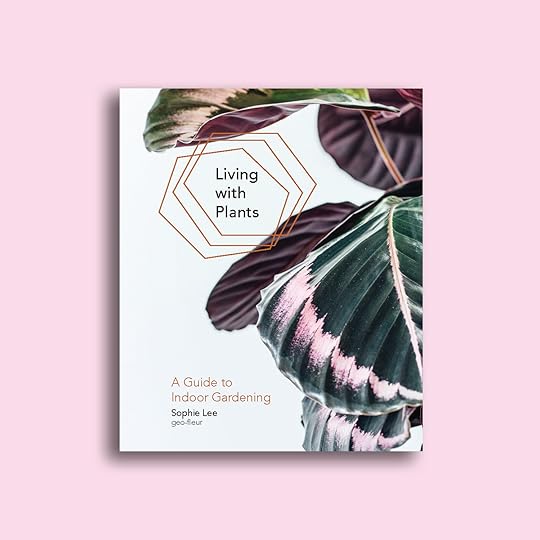
Brent has an incredible idea for the upstairs of the Mercantile (more on that in a later post) and the amount of plant/gardening specific books we have on our long dining room table grows by the day (see what I did there?). One of the books is LIVING WITH PLANTS. It will teach you how to create bespoke beautiful botanics for your home, your office or a Mercantile. Offering you over 30 innovative projects, you will be guided on the different ways you can green-up your living space: from moss wall hangings, potted plants, air plants, water plants, hanging baskets, terrariums, and more. Each project can be adapted to use equipment you already have at home, as well as teaching you ways you can upcycle your own pots, containers, plant stands, and wall hangings. After you read the book, tell us which of the projects should you think Brent wants to do at the upstairs of the Mercantile.
Buy it on Amazon >> Living with Plants: A Guide to Indoor Gardening[image error]

1
Beekman 1802 Almanac Annual Subscription

2
Summer Almanac

3
Fall Almanac
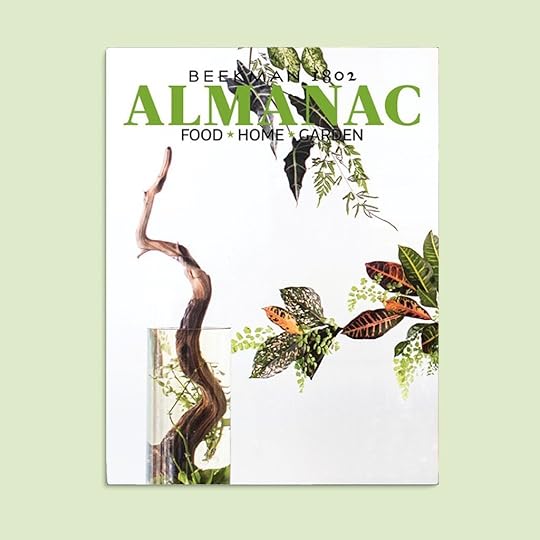
4
Spring Almanac
Visit the Mercantile
The post B.1802 Reading List | February 2018 appeared first on Beekman 1802 Mercantile.



